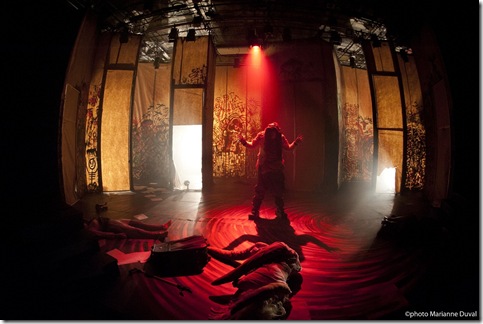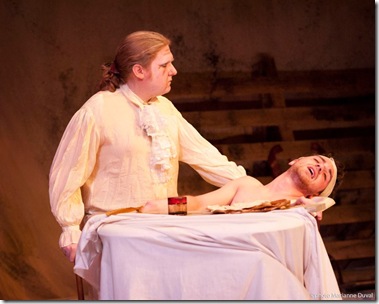Viol( Schändung) : a magnificently choreographed production of Bothos Strauss’ reworking of Titus Andronicus. A reminder of a great evening of student theatre.
Sixteen tableaux performed by a huge cast of students including a chorus that not only speaks but also transforms itself into parts of the set and integrated symbolic forms, reveals the enormous talents of Miriam Cusson who actually choreographs as much as directs this violent ritual of human degradation, pain, cruelty and ambition. The irony emerges through a string of sado masochistic rituals of martyrization, and frenzied physical desire set off by the site of the sacrificial victim – violated, slashed and mutilated. A contemporary playful mise en abyme of a contemporary horror show where the director brings in the voyeuristic faces of the chorus peering out from the back of the set. There is the lust, the exhibitionism, the penitence…some of the most violent human instincts come crashing down on the spectator in this captivating parade of ceremonies that holds our attention every second of the evening. . The thread that runs through the performance is inherited from the Elizabethan (or Jacobean) Vengeance tragedies of Thomas Kyd a contemporary of Shakespeare; however, it owes even more to the ultimate vengeance tragedy Thyeste by the roman playwright Seneca that so intrigued Artaud

